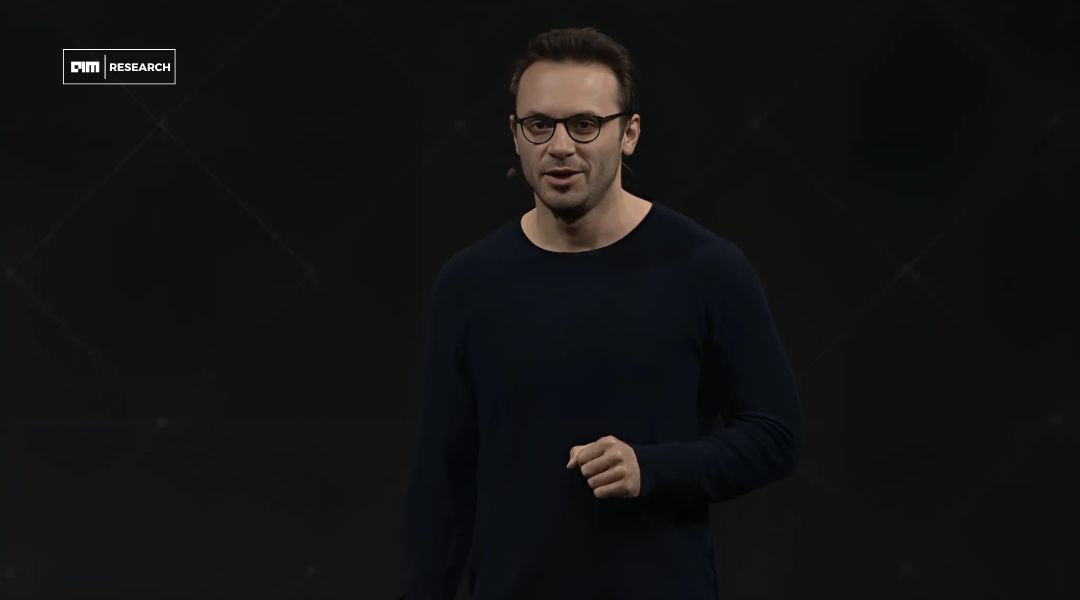
Everyone Wants Harvey and Here’s Why
- By Anshika Mathews
- Published on
The services offered by Harvey represent the future of legal and compliance work.


When PwC rolled out Harvey, an AI-powered legal assistant across its legal services teams, it was the junior attorneys who showed the most enthusiasm. “They don’t want to sit there going through legislation manually trying to piece things together,” said Bivek Sharma, Partner and Chief AI Officer at PwC UK, at Fortune’s Brainstorm AI conference in London. “They can have a tool to kind of get them 60% to 70% of the way there, then they can do more qualitative work.”
Harvey, developed by a San Francisco-based startup of the same name, was founded in 2022. It is designed to automate tasks such as contract analysis, document drafting, legal research, and compliance review. The company has since grown to a valuation of $3 billion and has reported over $70 million in annual recurring revenue.
Verizon and Comcast are among the companies publicly using Harvey to support their legal teams.
Verizon’s legal and compliance functions began integrating Harvey through a program dubbed “Generative January.” The initiative included 21 hours of hackathons involving 51 teams across legal, policy, and responsible business units. Gabrielle Kohlmeier, Global Head of Legal Innovation and Emerging Solutions at Verizon, said the hackathons helped identify “value-generating and cost-saving applications” quickly.
“The services offered by Harvey represent the future of legal and compliance work,” said Vandana Venkatesh, Executive Vice President & Chief Legal Officer at Verizon. The company now uses Harvey for contract review, regulatory analysis, litigation support, and due diligence processes.
At Comcast, Harvey is being rolled out across 11 functional legal teams in the United States and EMEA. The implementation includes compliance, litigation, privacy, legal operations, and content acquisition. “Harvey is a powerful tool that will help us do our work more efficiently and effectively,” said Lynn Charytan, Executive Vice President and General Counsel for Comcast Connectivity & Platforms. One of the initial areas of focus is the development of automated playbooks to support enterprise-wide contracting processes.
Winston Weinberg, co-founder and CEO of Harvey, points to structural shifts in legal training as part of the platform’s appeal. “The apprenticeship model kind of broke down,” he said. “Over the decades, as legal work became more complex, junior associates spent less time learning from real-world experience and more time holed away doing research.”
He argues that automation of repetitive tasks allows earlier exposure to client-facing and strategic work. “You’re going to see how the C-suite thinks about… structuring a deal for tax considerations,” he said. At PwC, Bivek Sharma said Harvey has become essential to operations, adding: “If we took Harvey away from our staff, there’d be a riot.”
Harvey’s architecture moves beyond single-model interactions. It uses a system of agents, AI components capable of planning, adapting, and interacting to complete legal tasks.
These agents are deployed within “Assistant Workflows,” which guide users through complex legal processes like motion drafting, regulatory analysis, and document review. According to the company, the workflows include “thinking states” that show users how decisions are being made during the task.
The workflows break down each process into smaller tasks, request relevant inputs from users, and walk them through the logic. They also include thinking states, transparent updates that show users what the system is doing at each step.
Harvey has benchmarked these workflows through blind legal evaluations. Tasks are categorized into structured drafting, unstructured analysis, and data extraction. According to the company, on structured tasks such as chronologies and templated documents, Harvey performs at or above human level. On more subjective tasks, such as analyzing transcripts or writing memos, human reviewers often preferred Harvey’s output for its clarity and comprehensiveness.
Customization is a central component of Harvey’s product strategy. “What I think is closer to a traditional moat,” said Weinberg, “is we are very focused on customization, massively.”
Harvey has worked with firms like A&O Shearman to build tools specific to practice areas such as a merger control assistant based on the firm’s global antitrust expertise. In some cases, the software is co-developed and then licensed to clients or other firms, with revenues shared between the law firm and Harvey.
To manage scalability, the company is developing a modular system. These workflows can be reused and adapted for different clients, enabling faster deployment without starting from scratch for every firm.
Initially, Harvey was built entirely on OpenAI’s models, a choice driven by enterprise security requirements, particularly Microsoft Azure compatibility. As those constraints have relaxed, Harvey has added support for other large language models, including Anthropic’s Claude and Google’s Gemini.
“We didn’t avoid other models out of loyalty to OpenAI,” said Weinberg. “Until recently, most major law firms would only approve AI tools that ran through Microsoft Azure.”
Harvey’s growth has been accompanied by increasing competition. Platforms like Hebbia and Legora are gaining traction in legal AI, with teams that include both technologists and former lawyers.
As of early 2025, Harvey reported usage across eight of the ten highest-grossing U.S. law firms. The company raised $300 million in a recent funding round led by Sequoia Capital, with participation from Coatue. Stripe veteran John Haddock joined as Chief Business Officer after evaluating customer feedback. “The decision came down to customer love,” Haddock told Business Insider. “That was Weinberg’s No. 1 maniacal focus.”
Harvey’s traction among large legal teams reflects demand for AI tools that deliver tangible improvements in productivity, accuracy, and workflow integration. Its growing enterprise client base, multi-model support, agent-based architecture, and customizable workflows represent a shift in how legal services are delivered and scaled.
As Bivek Sharma of PwC put it: “People want this technology.”
📣 Want to advertise in AIM Research? Book here >
Cypher 2024
21-22 Nov 2024, Santa Clara Convention Center, CA
A Vendor Briefing is a research tool for our industry analysts, and an opportunity for a vendor to present its products, services and business strategies to analysts who cover the vendor specifically or a related technology or market.
AIM Research encourages technology vendors and agencies to brief our team for PeMa Quadrants, when introducing a new product, changing a business model, or forming a partnership, merger, or acquisition.


